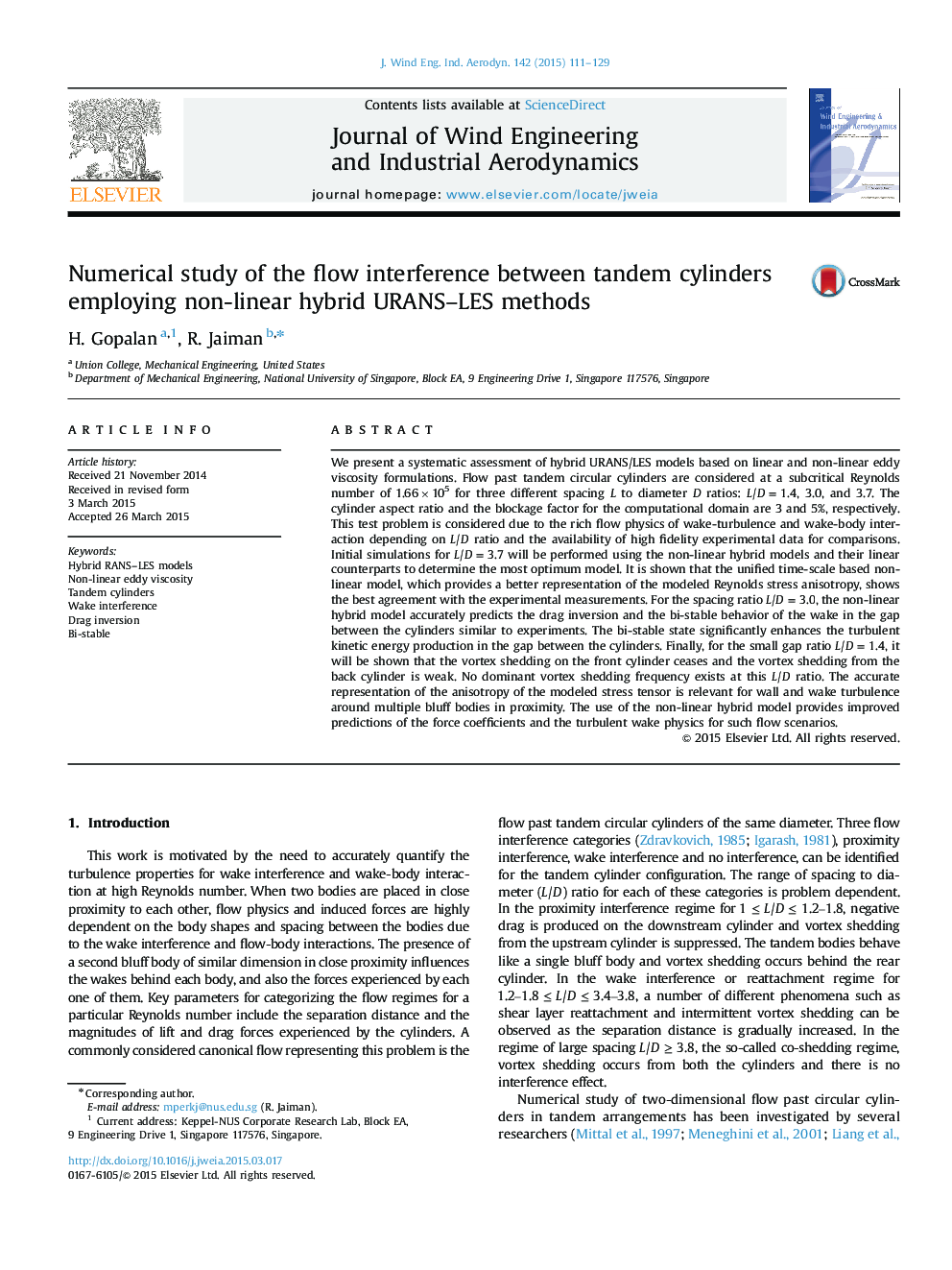| کد مقاله | کد نشریه | سال انتشار | مقاله انگلیسی | نسخه تمام متن |
|---|---|---|---|---|
| 6757574 | 511126 | 2015 | 19 صفحه PDF | دانلود رایگان |
عنوان انگلیسی مقاله ISI
Numerical study of the flow interference between tandem cylinders employing non-linear hybrid URANS-LES methods
دانلود مقاله + سفارش ترجمه
دانلود مقاله ISI انگلیسی
رایگان برای ایرانیان
موضوعات مرتبط
مهندسی و علوم پایه
مهندسی انرژی
انرژی های تجدید پذیر، توسعه پایدار و محیط زیست
پیش نمایش صفحه اول مقاله

چکیده انگلیسی
We present a systematic assessment of hybrid URANS/LES models based on linear and non-linear eddy viscosity formulations. Flow past tandem circular cylinders are considered at a subcritical Reynolds number of 1.66Ã105 for three different spacing L to diameter D ratios: L/D=1.4, 3.0, and 3.7. The cylinder aspect ratio and the blockage factor for the computational domain are 3 and 5%, respectively. This test problem is considered due to the rich flow physics of wake-turbulence and wake-body interaction depending on L/D ratio and the availability of high fidelity experimental data for comparisons. Initial simulations for L/D=3.7 will be performed using the non-linear hybrid models and their linear counterparts to determine the most optimum model. It is shown that the unified time-scale based non-linear model, which provides a better representation of the modeled Reynolds stress anisotropy, shows the best agreement with the experimental measurements. For the spacing ratio L/D=3.0, the non-linear hybrid model accurately predicts the drag inversion and the bi-stable behavior of the wake in the gap between the cylinders similar to experiments. The bi-stable state significantly enhances the turbulent kinetic energy production in the gap between the cylinders. Finally, for the small gap ratio L/D=1.4, it will be shown that the vortex shedding on the front cylinder ceases and the vortex shedding from the back cylinder is weak. No dominant vortex shedding frequency exists at this L/D ratio. The accurate representation of the anisotropy of the modeled stress tensor is relevant for wall and wake turbulence around multiple bluff bodies in proximity. The use of the non-linear hybrid model provides improved predictions of the force coefficients and the turbulent wake physics for such flow scenarios.
ناشر
Database: Elsevier - ScienceDirect (ساینس دایرکت)
Journal: Journal of Wind Engineering and Industrial Aerodynamics - Volume 142, July 2015, Pages 111-129
Journal: Journal of Wind Engineering and Industrial Aerodynamics - Volume 142, July 2015, Pages 111-129
نویسندگان
H. Gopalan, R. Jaiman,